You were careful in selecting a stallion to best compliment your mare. You had a culture done and scheduled your veterinarian to examine her for reproductive soundness. You timed your lights to make sure she would be cycling when breeding seasoned opened and finally got the good news …“she’s in foal.”
You may have monitored progesterone levels to maintain the pregnancy and likely had more than one heartbeat check. In just a few months your highly-anticipated foal will arrive so now is NOT the time to slack off because the last few months of fetal development see the most growth, tissue accumulation and weight gain. Nutritionists and long-time breeders agree, what and how you are feeding your broodmare in the last few months of gestation is vitally important.
Scott and Linda Berwick both got involved with horses at a very young age. They met at a horse show and found they had a lot in common, including their passion for equine adventures. They have been married for over 30 years and together own and operate Berwick Family Farm, located four hours north of Syracuse, New York, has produced over 35 foals over the years. And it all started with a chestnut AQHA mare named Spice Machine.
The daughter of A Good Machine out of Sweet Talkin Spice was Linda’s show mare. With 23.5 AQHA points, $20,762 in earnings a win in the 2-Year-Old Open Slot Western Pleasure at the Double Your Pleasure Futurity and a third place finish at the Congress in the 2-Year-Old Limited Non-Pro Western Pleasure Stakes, the Berwicks had what they thought would be a solid backbone for a breeding program.
And they were right.
“Her first foal, Too Spicy To Sleep, went on to earn a Congress Championship in Western Longe Line,” Linda said.
The Berwicks also bought a few other well-bred broodmares including Simple Expectations, who was bred to Zippos Mr. Good Bar. She produced Simply My Goodbar, winner of the Tom Powers Futurity 2-year-old Western Pleasure Stakes Class and Intermediate Non-Pro Western Pleasure at the NSBA World Show.
They also own Reserve Congress Champion Whos Cheating Who (the dam of Whos Chasing Who, The Whoo and Chasing Batterflies) as well as RR Abbeys Future (the dam of Lunamoon), Real Hot N Spicy and Shesa Candy Machine, among others.
They are expecting eight foals in 2022 including five recipient mares carrying Whos Cheating Who babies (three by Heart Stoppin and two by The Loping Machine); Real Hot N Spicey and RR Abbeys Future are both carrying No Doubt Im Lazy foals; and Shesa Candy Machine (fourth in the Congress Masters 2-Year-Old Open Western Pleasure) is in foal to Only In The Moonlite.
“Our feeding regime for all recipients and broodmares includes a maternity pelleted feed, beet pulp with free choice of the best quality hay available, supplements, minerals with a particular attention to calcium, copper, vitamin E and selenium,” Linda explained. “I am a strong believer in supplements and minerals to provide the necessary nutrients to the unborn foal. It’s also important to follow a deworming and vaccination schedule for the expecting mare. I believe consistency is key.”
Because Ontario winters can be unpredictable, the Berwicks keep all the broodmares and recipient mares in a heated barn under lights.
“They are fed, pelleted feed twice a day, given supplements in the morning, and weather permitting, turned out with heavy blankets and brought in before 4 p.m. (before the sun goes down),” Linda said. “When turned out, they have access to free choice hay, mineral tubs and heated water tubs.”
The Berwicks feel that consistency in their daily routine and feeding program is key to the success of their foals.
“Scott and I are very proud of our breeding program,” Linda said. “It’s just as rewarding to learn of our foals’ success with their owners as it is to promote one for the show pen. This is what keeps us in the game year after year.”
The science behind feeding programs
Katy Bissinger, farm supervisor and research coordinator for the University of Florida’s Equine Sciences program says the first thing that owners should have is a basic understanding of how to identify when a broodmare’s nutritional requirements change, especially during late gestation where energy, calories, protein, vitamins and minerals should be adjusted accordingly.
“During mid and late gestation and through foaling it’s critical to fine-tune diets to prepare the mare and help maintain her and her foal’s demands during lactation,” she explained.
One thing that Katy likes to remind owners is that a mare will sacrifice herself for her growing foal. Babies will have all their own requirements met until the mare absolutely can’t support them anymore.
“Just because you feed a mare way over her requirements doesn’t mean you’re helping the foal in utero,” she explained. “A mare’s milk typically has the same nutritional content no matter how much you add and feed above requirements.”
Bissinger has studied equine nutrition most of her life. Her parents owned a feed store and that’s where she got her introduction to the science behind feeding horses.
“I got into the Quarter Horse industry when I came to UF and joined the school’s Western Team, coached by trainer Jenny Baker,” she said. “Since then, I’ve purchased two horses from the UF, show all-around events and help Jenny coach the UF team.”
Bissinger moved to the University of Florida/IFAS Equine Science Center as an undergraduate student in January of 2015 and in 2016 she accepted a full-time position with the program to pursue her master’s degree while working at both the Equine Science Center and the Horse Teaching Unit where she taught classes and organized the Sale of the Swamp, UF’s annual auction of their green-broke 2-year-olds show prospects. Bissinger completed her Master’s in Animal Science in December of 2020 in Equine Nutrition working with UF’s Dr. Lori Warren. After graduation, she became Farm Supervisor in 2021.
Established in 1969, the UF Equine Sciences Center is a 320-acre nutritional and reproductive research facility, located seven miles north of Ocala Undergraduate students receive instruction on the ins-and-outs of reproduction and breeding, foaling, nutrition, genetics, weanling handling, horse psychology, farrier science, judging and training.
UF currently stands IE Reason, Snip O One (a Reining stallion) and, starting in 2022, Certain Potential will be offered to the public. Some notable UF foals include: Best Brew At The Bar, UF Rockin The House, UF A Certain Star and Extra Dirty Martini.
At the University of Florida’s Equine Science Center late term mares and other horses with extra nutritional needs (hard keepers) are fed a supplement made up of a rice bran mix.
“Even though concentrate is very necessary for a late gestation mare, you still should be conscious of how much you’re feeding. We feed a 14% pellet to make sure we’re meeting the mare’s protein requirements for lactation and foal growth. As a rule, we don’t feed more than eight pounds of grain per feeding,” Bissinger explained. “If the mare needs more than this to maintain a healthy body condition then grain should be fed in three meals or have extra calories be supplemented in their meal rations.”
Protein and forage should be the main component in late gestation and there’s times that changing the type or amount can make a world of difference.
“Some mares eat only a ration balancer for most of the summer/early fall when paired with grass pastures and Coastal Bermuda grass hay, while other mares continue to need alfalfa or rice bran supplementation,” Bissinger said. “The guideline we follow is four pounds of the 14% pellet is needed per day to meet maintenance requirements. On Nov 1, I start to gradually increase all of the pregnant mares by 3/4 of a scoop per meal of the 14% pellet. Once they foal, mares are put on our Lactation Diet, 16 pounds-per-day of the pelleted feed that equates to two-full scoops per meal-feeding. If any more than this is needed, we start supplementing rice bran and up their forage amount and add alfalfa. During the winter, we offer free choice coastal Bermuda grass hay to all the horse’s diets.”
It’s all in the score
Equine veterinarians and other equine professionals rate horses on a scale of 1 to 9 in what is known as the Henneke Body Condition Scoring Chart. A 1-score is considered poor and a 9-score means extremely fat. Bissinger likes to keep a mare’s body condition at a nice healthy level of 5.
“Mares who are too skinny or who are obese usually struggle with conceiving, maintaining pregnancy and being re-bred,” she said.
The University of Florida’s doctors, staff and undergrads take into consideration that every mare and pregnancy is different.
“It’s our job to make sure each mare has whatever she needs to support herself and her foal, especially late in pregnancy,” Bissinger said. “Every mare needs to have their nutritional needs monitored and evaluated even when alfalfa or a supplement is added or a third-meal is given.”
The final months
Late in the mare’s pregnancy Bissinger says horse owners should be focused on two factors – energy and protein.
“Obviously, a higher energy or calorie intake is needed to for the mare that will help the foal through the final stages of growth,” she explained. “Additionally, high quality protein sources should be fed to make sure the lysine requirement is met. Lysine is the first limiting amino acid in horses, so without the proper quantity of lysine, protein cannot be utilized. As long as the proper protein concentrate is fed with around that 14% feed – this requirement should be met. Vitamins and minerals have the biggest increase during lactation to make sure the calcium and phosphorus levels are adequate in the milk to ensure proper foal bone development.”
Practical Experience
For decades Mike Hay has been working on the reproduction side of the horse industry. He has worked for large breeding operations and for the last 25 years has owned and operated his own breeding operations, standing such successful stallions as Luke At Me, Hot N Blazing, The Rock, One Hot Krymsun, The Krymsun Kruzer, Mazeratti and Extremely Hot Chips. Mike and his wife, Jan, recently moved to Reddick, Florida where they own and operate Pilot Knob Stud, and stand AQHA stallions Outlaw Enterprise and MadeFourIt. Hay has downsized the mare management side of the business to focus on shipped semen but no matter how many mares you manage late in gestation, the procedure remains constant.
“In my experience, the last 90-days of gestation are very important. Depending on the location, many areas deal with tall fescue grass issues in pastures which can be a serious problem for pregnant horses as they can develop toxicosis if this grass is endophyte-infected,” he explained. “A dry lot with plenty of nutrition without the availability of fescue grass is a must. This is an easy problem to correct ahead of time, but very expensive and disappointing if it’s not addressed before pregnant mares graze.”
Hay adds a ration balancer to the mare’s regular feed during the last 90-days of pregnancy that can be continued as a supplement when they’re nursing to aid in milk production.”
As with everything, it’s important to do your homework.
“Keep your mare in tip-top condition year-round and always up-to-date on vaccines and any maintenance she needs done and timed appropriately if you want to ensure an easy and healthy pregnancy and foal,” Hay said. “It’s a big responsibility but the broodmares deserve our best.”
Tim and Dana Crager are celebrating their 38th year in the breeding business. They have crafted their broodmare band to include bloodlines that produce quality prospects to excell in the show pen. About 25 of their broodmares, in foal to their late stallion, The Ultimate Fancy, as well as their current stallion iStyle, and some select outside stallions, will be foaling in 2022 at their Cross Creek Fram in Flemingsburg, Kentucky.
Dana said they have high standards for feeding forage to broodmares throughout their pregnancies.
“Our mares get a late-night hay meal regardless of where they’re at in their cycles, pregnancies, foaling or nursing,” she explained. “Quality grass, hay and pasture-care are all must-haves. During the late fall, grass can become overgrazed and during the winter months it’s common to have a decline in both quality and quantity. That’s why the condition of hay needs to be taken seriously with some testing done to ensure the hay holds sufficient nutrition, minerals, protein and doesn’t contain mold, dust, fungus or toxic weeds and grasses.”
But special attention is paid to their diets in the final stage of gestation. Some of the mares may require supplements that grain and forage alone don’t fully supply. They work closely with their veterinarians and reproduction team to achieve a well-rounded diet for each mare, providing extra nutrients the closer the time comes to foal and nurse.
Not all nutritionists are created equal
Both Debbi Trubee and Roger Landis enjoyed successful show careers before deciding to focus on the breeding side of the industry. Now with 30 years of experience between them, they operate North Farm in North Lawrence, Ohio, where they stand Makin Me Willy Wild and The Best Martini and offer frozen semen from the late Winnies Willy. Over the past years, they have raised dozens of foals annually from such decorated mares as Congress and AQHA World Champion producers She Be A Chex and Impulsive Debutante and many other proven producers.
To make sure they are doing all they can to produce healthy, successful foals they insist on calling in the experts.
“Finding a veterinarian and nutritionist that specialize in reproduction is the only way to handle a mare’s pre-pregnancy, pregnancy, foaling and nursing condition,” Trubee explained. “All vets and nutritionists aren’t created equal and while you may have a wonderful vet that is great at lameness or dental work that doesn’t mean they are as talented at the breeding end of things. It’s well worth the money, the time to search and find a specialist to assure a healthy mom and foal.”
Molly Wege has a small home-grown breeding operation in Morrison, Florida. She and her husband, Jeff, raise three foals each year at their Summers Haven Ranch, named after their first foal, FR Okie Summers Frost (Summer) a mare they still have today.
Although she doesn’t produce as many foals as the big breeding operations, she pays just as close attention to her feeding program.
Wege’s grain choice for late gestation is a good quality 12-14% protein feed that’s low in starch and sugar. She suggests feeding by weight and following the manufactures’ science of nutrition recommendations.
“A 2-or 3-quart feed scoop twice daily should provide sufficient vitamin, mineral and calorie content needed for the late gestation mare,” she explained. “A perfect weight balance is sometimes difficult to achieve but it’s key to an easier delivery for both mom and foal. I don’t feed the high protein content that the Mare and Foal grain formulas contain because I’ve seen foals have leg issues as a result.”
That’s something Wege knows about first hand because she shows the horses she raises.
Wege, her horses and her foals have earned both AQHA, APHA and Pinto World and Reserve World Championships, Pinto Horse of the Year titles in several divisions, ROM awards, countless Top 5 and Top 10 titles in a wide variety of disciplines.
Molly’s love for horses was sparked at age 3 when her grandfather took her riding at Rockin M Ponies in North Miami and paid the barn owner $1 to take her, while fastened to the saddle with a seatbelt, around their arena three times. In 1995, she went horse shopping with her husband and purchased her first horse, Rozee, a strawberry roan solid Appaloosa.
“I bred her 10 years later to our beautiful APHA black and white stallion and she produced a stunning filly, Harley Ann,” Wege recalled. “My love for the paint horse grew from there.”
In 2022 they are expecting foals out of Sheza Lil Charmer (bred to One And Only Asset) as well as Blue Guns R Foxy and MS Smokey Bartender, both bred to her stallion, AKA The Mob Boss (by Runaway Groom and out of Okie Leo Frost who is out of Summer).
To keep things simple, Wege feeds alfalfa hay with timothy or orchard grass hay to supplement natural grass forage. Not everyone can offer their mare access to full-time grazing but Wege thinks getting mares in foal outside as often as possible helps keep them active.
“My mares are kept in a riding or exercise program until they are seven months along and then are pasture-kept and brought into foaling stalls about three weeks prior to their due date to become acclimated to the stall, bedding and barn environment,” she explained.




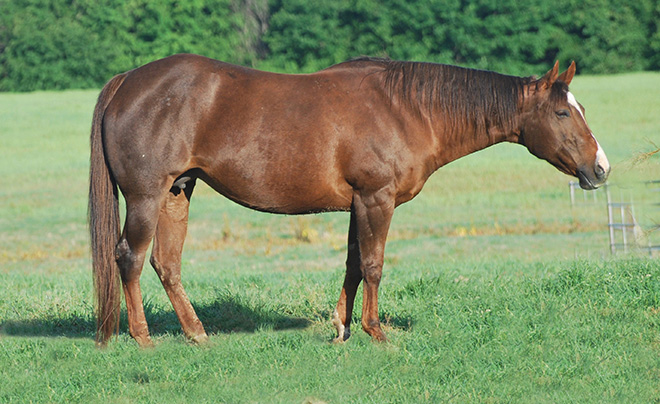
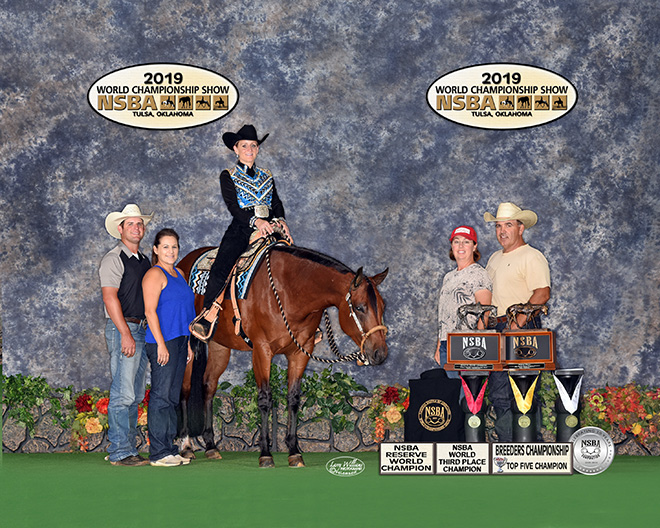
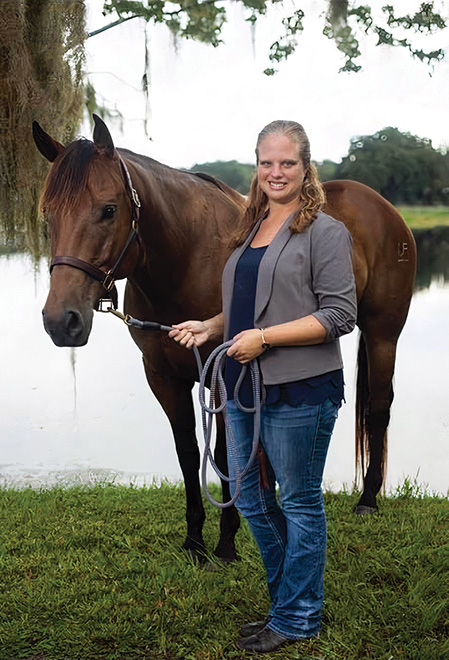
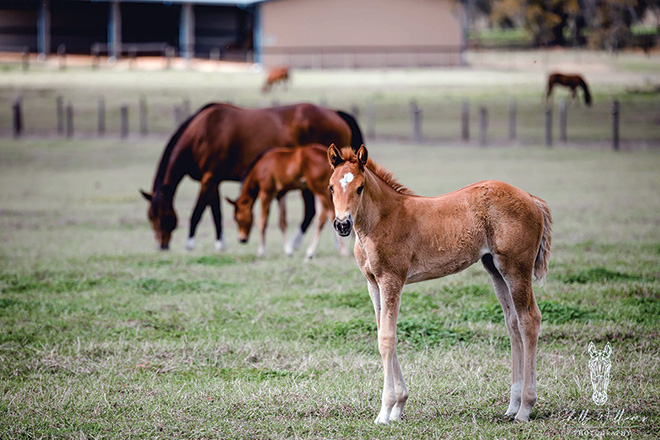

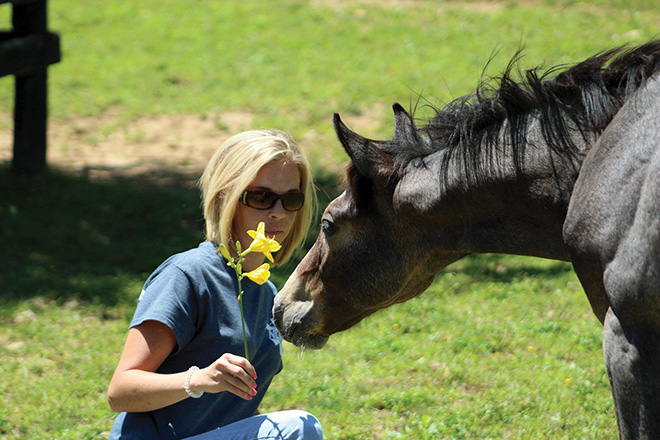
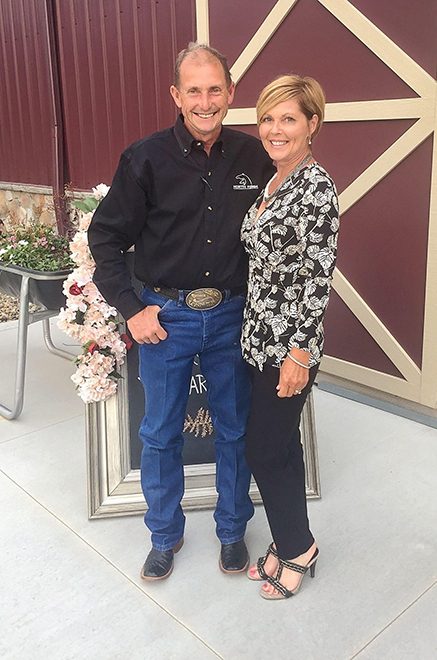
You must be logged in to post a comment Login